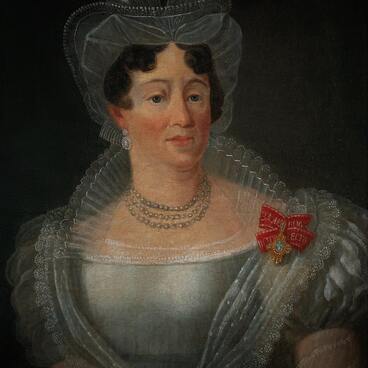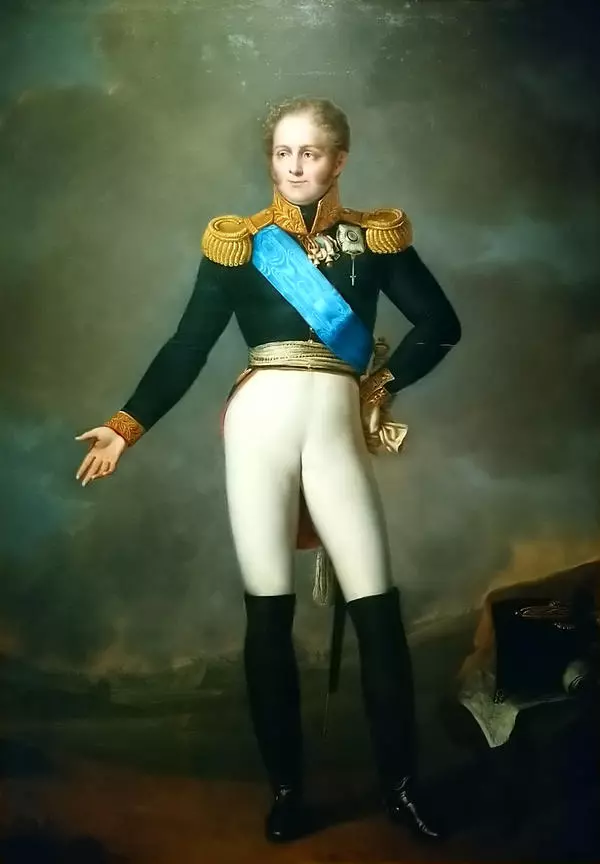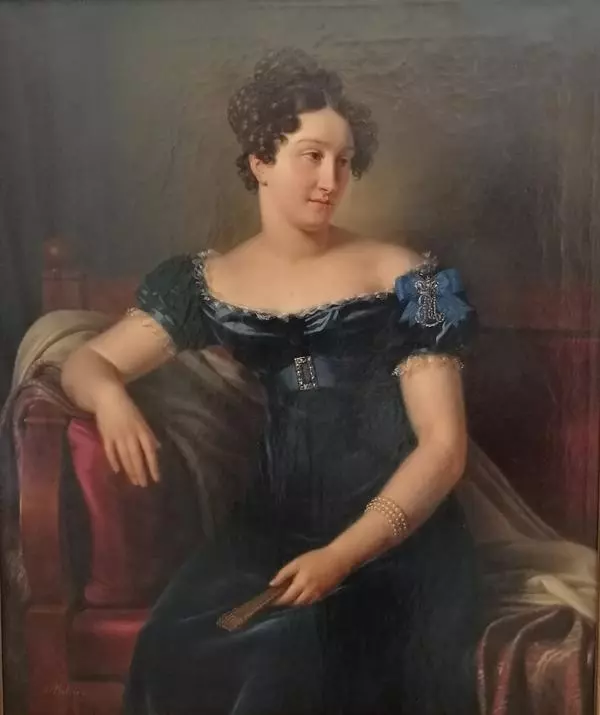‘Portrait of an Unknown Woman in a Poke Bonnet’ from the museum’s collection was painted by the French artist Benoit-Charles Mitoire.
In the early 19th century, the portrait genre was considered the most popular among the Russian nobility. Along with a ceremonial portrait, which described people through their clothes, class attributes and awards, a chamber portrait, devoid of theatrics, was often ordered as well. Such an image prioritized the personality and emotional state over the social position. These paintings were kept in family collections and decorated the walls of the estates and townhouses of the Russian nobility.
Chamber portraits are characterized by special delicacy, ease and naturalness, as is the “Portrait of an Unknown Woman in a Poke Bonnet”. The canvas depicts a middle-aged woman dressed in the fashion of the 1820s. She wears a silk dress of a noble light blue color and an elegant lace poke bonnet. A white shawl with a patterned border is thrown over the model’s shoulders. The only jewel in the portrait is an expensive pearl fermoir.
The word French word ‘fermoir’ means a fastener. In Russia, this name was attributed to an ornated large clasp on a carcanet or necklace or the necklace itself, which could be made of diamonds, sapphires, rubies and other precious stones. The clasp can be found in many portraits of the 18th—19th centuries.
A white shawl with a patterned border is thrown over the model’s shoulders. It is evident that the woman comes from a wealthy family, since not every nobleman could afford to order a portrait from such an eminent artist. Benoit-Charles Mitoire painted Emperor Paul I, many representatives of the Russian nobility, and important statesmen of the Russian Empire.
Mitoire was born in 1782 in a family of a solicitor. At the age of 19, he moved to Russia, married a Russian woman and received Russian citizenship. In the 1810s, the artist lived in the Reserve Palace and the Konyushenny Dvor at the New Michael Palace. In 1813, he received the title of academician for the portrait of Feodosy Shchedrin. Mitoire’s divorce was probably the reason why he left Russia after 1830.
In the early 19th century, the portrait genre was considered the most popular among the Russian nobility. Along with a ceremonial portrait, which described people through their clothes, class attributes and awards, a chamber portrait, devoid of theatrics, was often ordered as well. Such an image prioritized the personality and emotional state over the social position. These paintings were kept in family collections and decorated the walls of the estates and townhouses of the Russian nobility.
Chamber portraits are characterized by special delicacy, ease and naturalness, as is the “Portrait of an Unknown Woman in a Poke Bonnet”. The canvas depicts a middle-aged woman dressed in the fashion of the 1820s. She wears a silk dress of a noble light blue color and an elegant lace poke bonnet. A white shawl with a patterned border is thrown over the model’s shoulders. The only jewel in the portrait is an expensive pearl fermoir.
The word French word ‘fermoir’ means a fastener. In Russia, this name was attributed to an ornated large clasp on a carcanet or necklace or the necklace itself, which could be made of diamonds, sapphires, rubies and other precious stones. The clasp can be found in many portraits of the 18th—19th centuries.
A white shawl with a patterned border is thrown over the model’s shoulders. It is evident that the woman comes from a wealthy family, since not every nobleman could afford to order a portrait from such an eminent artist. Benoit-Charles Mitoire painted Emperor Paul I, many representatives of the Russian nobility, and important statesmen of the Russian Empire.
Mitoire was born in 1782 in a family of a solicitor. At the age of 19, he moved to Russia, married a Russian woman and received Russian citizenship. In the 1810s, the artist lived in the Reserve Palace and the Konyushenny Dvor at the New Michael Palace. In 1813, he received the title of academician for the portrait of Feodosy Shchedrin. Mitoire’s divorce was probably the reason why he left Russia after 1830.





